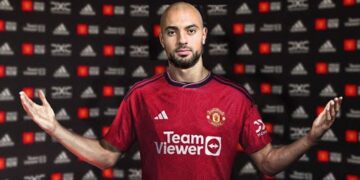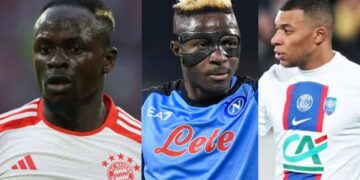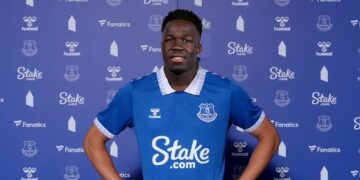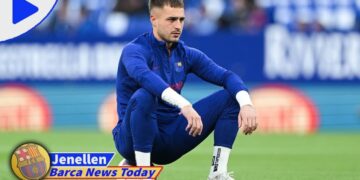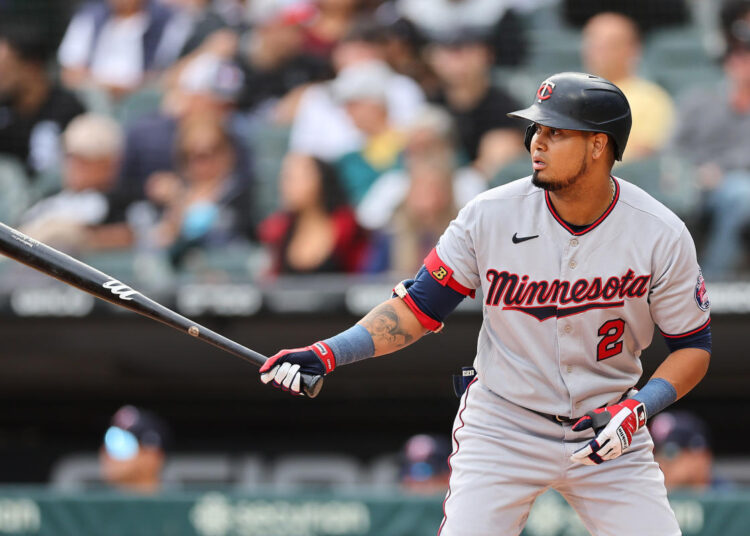Reigning American League batting champion Luis Arraez is headed to Miami in a deal that brings prized pitcher Pablo López to Minnesota.
The Miami Marlins on Friday sent Lopez and two prospects to the Minnesota Twins in exchange for Arraez, a nominal second baseman who will likely become a top-of-the-order fixture as the first baseman or designated hitter. The deal was first reported by ESPN’s Jeff Passan.
A preternatural bat-to-ball talent, Arraez is coming off his best season in the majors, in which he earned his first All-Star nod and led the AL with a .316 batting average. He also boasted the best (read: lowest) strikeout rate among qualified MLB hitters, at 7.1%, in a league in which the average was 22.4%. His superlative contact skills are an outlier in the sport and help make up for the fact that he packs little power (he connected for only eight homers in that great season) and might not have a home defensively.
MLB’s limits on the infield shift, taking effect this season, will likely rule Arraez out of regular duty at second base, where he sometimes played for the Twins despite rating as one of the league’s worst fielders at the position.
López posted a 10-10 record with a 3.75 ERA last season, good for a 108 park-adjusted ERA+. The 6-foot-4 right-hander flummoxes hitters with a terrific changeup. Since 2020, his 3.52 ERA ranks him among the top 30 pitchers who have thrown at least 300 innings. López will slot into the Twins’ rotation as something of a co-ace alongside Sonny Gray. His presence drastically improves a thin pitching staff.
Why the Marlins traded for Luis Arraez
This was a classic surplus trade, for both sides really but especially so for the Marlins. They have been wildly successful at developing starting pitchers, but GM Kim Ng has struggled to find strong hitters to field behind them. Lopez, soon to be 27, will make $5.45 million in 2023 and was the oldest of a rotation crop that includes 2022 NL Cy Young winner Sandy Alcantara, Jesús Luzardo, Edward Cabrera and Trevor Rogers.
When Ng inked veteran Johnny Cueto to a contract earlier this offseason, it only increased the industry’s suspicion that López would be on the move.
The target: Hitting. The Marlins ran out MLB’s 25th-best offense (by the park-adjusted wRC+ metric) in 2022, despite Ng’s attempts to bolster the group by signing outfielders Jorge Soler and Avisail Garcia. Only four teams struck out more often. Arraez should help with that, though his value figures to take a hit with the shift rules limiting his lineup spots. The Marlins figure to use him at first base or designated hitter in some sort of rotation with Garrett Cooper.
It’s certainly eyebrow-raising that Miami had to send prospects alongside Lopez to nab Arraez, who will remain under team control through 2025. Rumors swirled around Lopez, a steady starter whom any number of teams could have used, all offseason. Heading into the winter, the Marlins almost certainly expected a better return — or at least a more well-rounded one.
Why the Twins traded for Pablo López
Like the Marlins, Minnesota was dealing with a bit of a roster imbalance. Fresh off president of baseball operations Derek Falvey’s patient, eventually successful pursuit of Carlos Correa, the Twins were looking a lot like a repeat of their not-quite-good-enough 2022 team, chock-full of decent hitters with very little pitching in support.
The 2022 Twins pitching staff and rotation were below average by park-adjusted ERA-. Perhaps a bigger concern: Only three teams got fewer innings from their starting pitchers. Lopez doesn’t have the longest track record, but he tossed 180 innings across 32 starts last season and sits at a comfortable 94 mph with his fastball. He joins Gray, Joe Ryan and summer 2022 trade acquisition Tyler Mahle in what still doesn’t rank as a particularly terrifying rotation but is now a considerably deeper one. The Twins are also expecting Kenta Maeda back from the elbow surgery that cost him all of 2022.
Falvey & Co.’s calculus with Arraez surely wasn’t easy, but it’s understandable. Fielding issues had already relegated him to first base more often than second in 2022, which becomes a tougher case to make for a player with superlative batting averages but minimal power. And beyond Correa and star center fielder Byron Buxton, the Twins have more offensive talent bubbling up. Two young left-handed hitters — Alex Kirilloff and Trevor Larnach — are ready to take on Arraez’s at-bats at first or designated hitter immediately. And third baseman Jose Miranda emerged late last season as a threat to partially replicate Arraez’s gravitational contact ability, albeit with a few more strikeouts and much more pop.
Add the young prospect talent the Twins acquired in this deal and a far more winnable division, and Minnesota likely set itself up to feel warmer and fuzzier about this trade a year or two down the line.
Read the full article here







